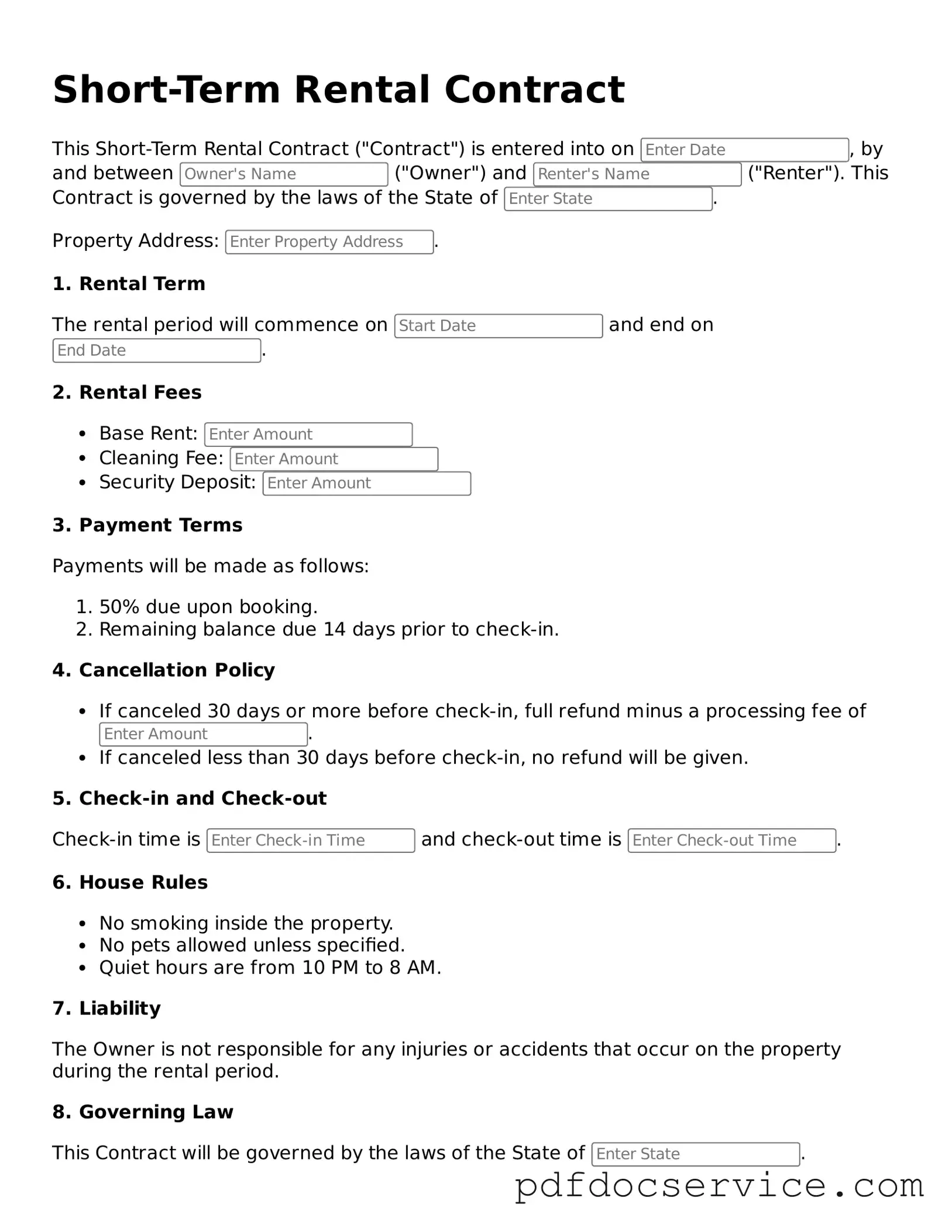What is a Short-Term Rental Contract?
A Short-Term Rental Contract is a legal agreement between a property owner and a tenant for the rental of a property for a brief period, typically less than 30 days. This contract outlines the terms of the rental, including payment details, rules for the property, and the responsibilities of both parties.
Why is a Short-Term Rental Contract important?
This contract is crucial because it protects the interests of both the property owner and the tenant. It provides clarity on what is expected from each party, reduces the likelihood of misunderstandings, and establishes a legal framework for resolving disputes should they arise.
What key elements should be included in the contract?
A comprehensive Short-Term Rental Contract should include the following elements:
-
Names and contact information of both parties
-
Property address and description
-
Rental dates and check-in/check-out times
-
Total rental price and payment schedule
-
Security deposit details
-
House rules and policies
-
Cancellation and refund policies
How can I ensure my Short-Term Rental Contract is legally binding?
To ensure the contract is legally binding, both parties should sign the document. It is also advisable to have the contract reviewed by a legal professional. This review can help confirm that all necessary elements are included and that the language is clear and enforceable.
What happens if a party violates the contract?
If a party violates the terms of the Short-Term Rental Contract, the other party may have the right to take legal action. This could include seeking damages or terminating the contract. It is important to document any violations and communicate with the other party to resolve issues amicably before pursuing legal remedies.
Can the contract be modified after it is signed?
Yes, the contract can be modified after it is signed, but both parties must agree to the changes. Any modifications should be documented in writing and signed by both parties to ensure clarity and enforceability.
Where can I find a template for a Short-Term Rental Contract?
Templates for Short-Term Rental Contracts can be found online through various legal websites, rental platforms, or local real estate associations. It is essential to choose a template that complies with local laws and regulations. Additionally, consider customizing the template to fit the specific needs of your rental situation.
